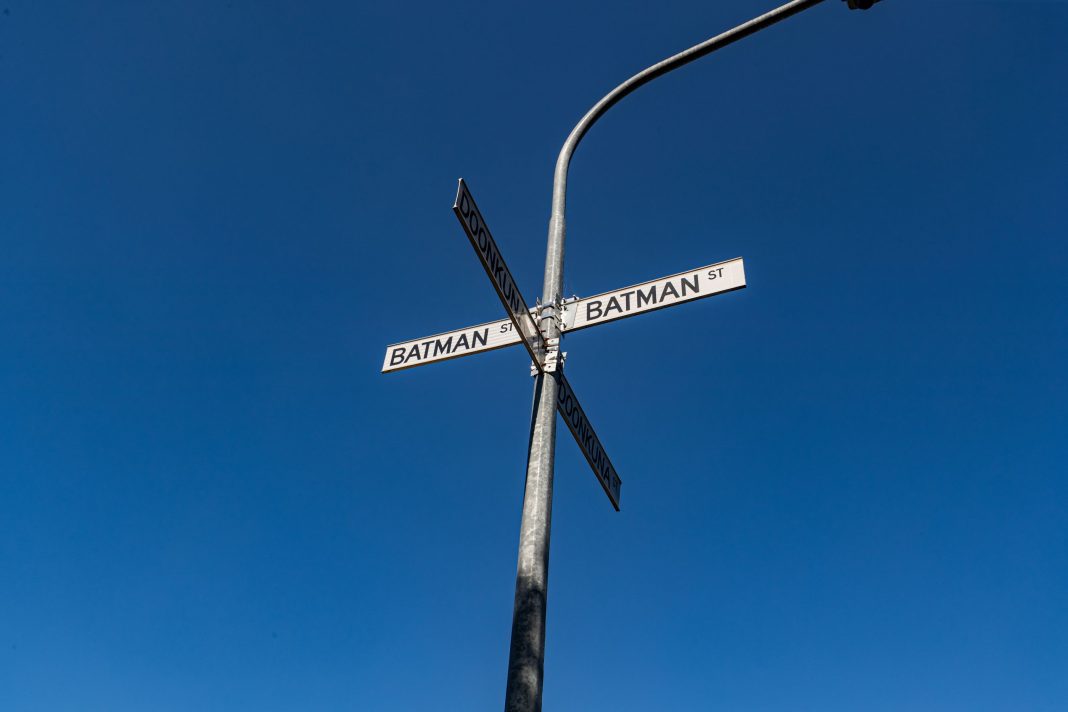Making your way around the suburbs of Canberra, you will find names that make you giggle or wonder where that name could have come from. CD has spoken with the expert and has the answers for you.
Unfortunately, not named after the caped crusader, Batman Street in Braddon is in honour of John Batman, pioneer of a settlement at Port Phillip Bay, Victoria in 1835. Which fits into the suburb’s theme of Aboriginal words, legislators and pioneers.
Many places, parks and streets were given titles by the Commonwealth before ACT became a self-governing jurisdiction in 1988. Since then, naming streets and suburbs has been serious business.
“I would say from limited observation that the ACT is probably the most rigorous [state or territory] We try to put a lot more rigour around the process of selecting names as well as create a focus for where those names come from,” says Greg Ledwidge, Surveyor-General of the ACT and Co-chair of the ACT Place Names Advisory Committee.
The Commonwealth named suburbs after Prime Ministers, the committee wants to commemorate people who have done a notable job at a high level or something that resembles a connection to the community. For instance, Ngunnawal in Gungahlin is named for the traditional owners of the land, the local First Nation community.
“There are a couple of other categories around things that are characteristically Australian when naming objects or places, as well as using First Nation vocabulary.”
Within the suburbs is a theme for the street names, this will echo back to the person the suburb is named for. Denman Prospect, named after Lord and Lady Denman, has a theme of Activism and Reform, as Lady Denman had a strong focus in these areas, says Mr Ledwidge. Eggins St is named for Evan Eggins, a health reform advocate and transplant recipient, while Eureka Way commemorates the Eureka Stockade uprising in 1854.
Themes for streets are identified when the suburb is created; however, Mr Ledwidge says as time goes on and places are expanded, the theme is not fixed in stone and can be modified.
“Recently we looked at expanding the theme for Fyshwick from just industrial towns to try and incorporate some of the land use names that might have come from Aboriginal and Torres Strait Islander Peoples.”
But where does the committee find all the names? The names come from within the committee itself or the Place Names team, they also invite the community to send in suggestions for names within a criteria.
“We can’t have a name that sounds too much like an existing name because we don’t want any confusion for delivery services, or more importantly, emergency services,” says Mr Ledwidge.
Many streets are named in commemoration of someone, that person will need to have some kind of connection to the theme of the suburb. For example, Greenway is named after architect Francis Greenway and the streets are named after other architects.
“Part of the process when we’re commemorating particular people, that person has to be deceased for at least 12 months before they’re commemorated,” says Mr Ledwidge.
The Place Names team reaches out to family members of the suggested honouree to ensure they are comfortabel for their relative to be remembered this way. This process can be lengthy as they want whole family units to be in agreement and they have to do it for every street named after a person.
“Sometimes people say no, for different reasons. It could be that they don’t particularly feel a commemoration is appropriate, I believe that’s happened once or twice. Sometimes family groups can’t agree,“ says Mr Ledwidge.
Some suburbs don’t commemorate people but rather things like ships (Red Hill), Australian flora (Rivett), mountains of Australia (Palmerston) or Australian country towns (Kinlyside). The process of naming streets is much more straightforward in these places, says Mr Ledwidge.
“Out in Throsby, there are native fauna names that have been used, which does simplify the process somewhat. It allows us to link the fauna names to the fact that they have Mulligan’s Flat Nature Reserve across the road, so there is a logical connection to the local landmark.”
Who gets the final say? Once a selection of names has been collated and provided to the ACT Place Names Advisory Committee, they put forward their recommendations to the Minster in charge.
“Here’s the crucial part: it’s not myself or my team on the advisory committee, it is ultimately the Minister. It is now Minister Steel,” says Mr Ledwidge.
As festive as it sounds, Christmas Street in Theodore wasn’t named after the happiest time of the year, rather Harold Percival Christmas was commemorated for his work during the Second World War. The southside suburb celebrated civilian war efforts during the First World War and Second World War, Mr Christmas set up Woolworth Bargain Basement in 1924, later becoming Managing Director and was Controller of New South Wales Division of the Australian Defence Canteen Service during the Second World War.
Mr Ledwidge doesn’t necessarily have a favourite street name, although he does get a kick from how some names are received. Especially when Moncrieff named its streets after musicians and those associated with the field of music after ACDC royalty Bon Scott, which increased the value and desire to purchase properties.
“It really did resonate with me that getting an appropriate street name had a significant impact on the enthusiasm to buy into the street,” he says.
What is your favourite Canberra street name?
To find out more or make a suggestion visit; planning.act.gov.au/community/place-names
Canberra Daily is keen to hear from you about a story idea in the Canberra and surrounding region. Click here to submit a news tip.



